Fire corals are so called because they sting. When something touches the coral, a coiled thread is ejected, penetrating the skin and injecting venom. These powerful stinging hairs are called cnidae.
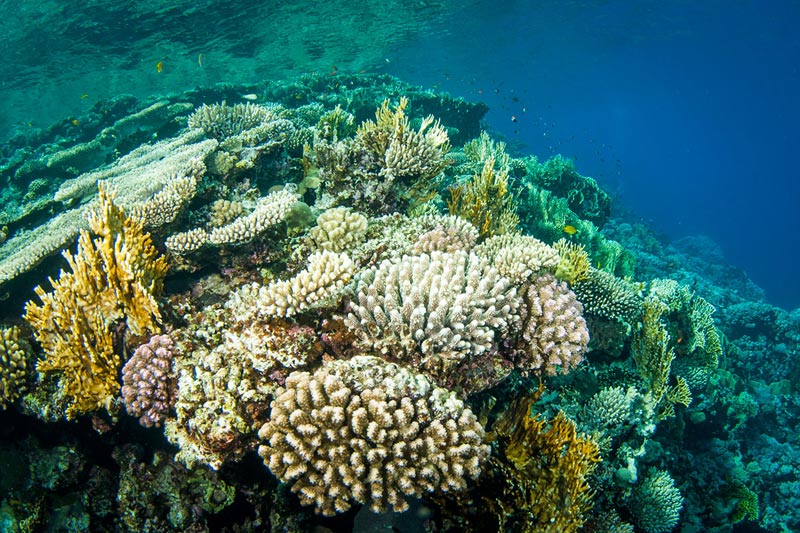
Divers injured
The coral is primarily defending itself against fish like parrotfish which would otherwise nibble it. However, the sting is strong enough to injure divers and snorkellers who brush their skin against them, causing burning and itching. Just see the comments below for stories about how bad this can be. (If you’re injured rinse with seawater and apply vinegar or methylated alcohol on the affected area. In a severe case anti-histamines can help, but seek medical advice.)
Not true corals
Colonies of fire coral are extremely important in building coral reefs. However, they are not true corals. They are, in fact, hydroids. The word hydroid means water animals. Other hydroids often look like ferny fronds growing from rocks. The fire coral is different: it looks like a hard coral.
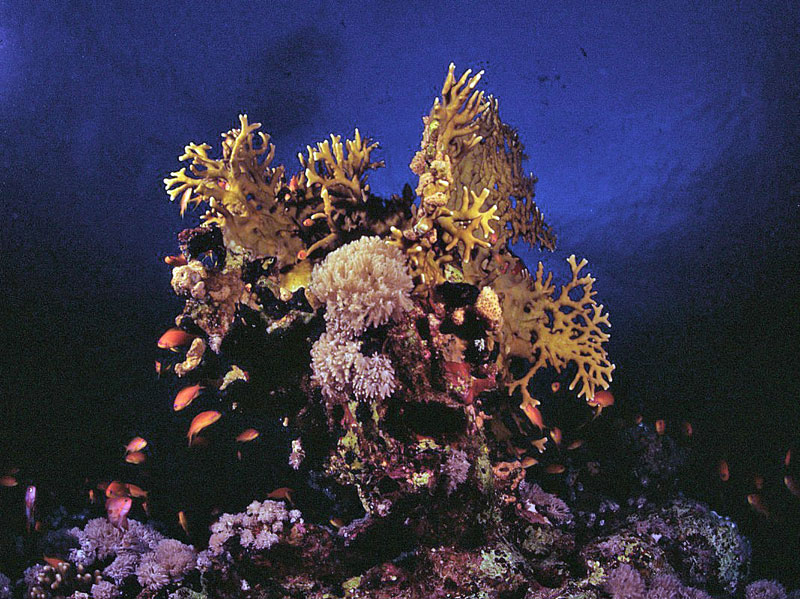
How to identify them
Fire corals are yellowish to brown in colour, often with white tips. There are several species and different growth forms. Some look like plates, some are encrusting but maybe the most familiar is the branching form. You can identify them by the minute pores on the coral surface.
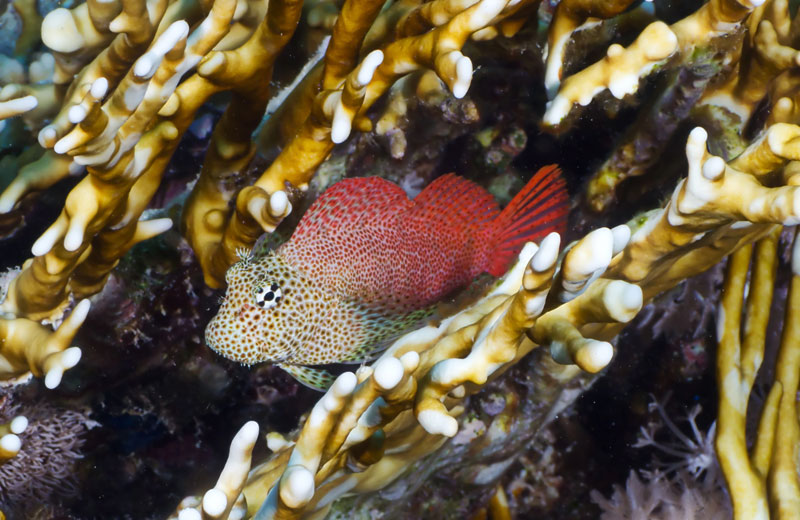
Divers come across fire corals on tropical reefs throughout the world, in sheltered and exposed sites, in shallow and deeper water down to 40 m. There are about 14 species in the Millepora genus.
Fire corals are often at the reef edge as they can withstand rough waters and currents.

Millepora tend to be oriented perpendicular to prevailing currents. This maximises their exposure to water flow allowing them to capture more food particles carried by the currents. It increases increases the surface area exposed to nutrient-rich waters. If fragments get broken during a storm they can regenerate. They are often the first to recover after short-term bleaching events.
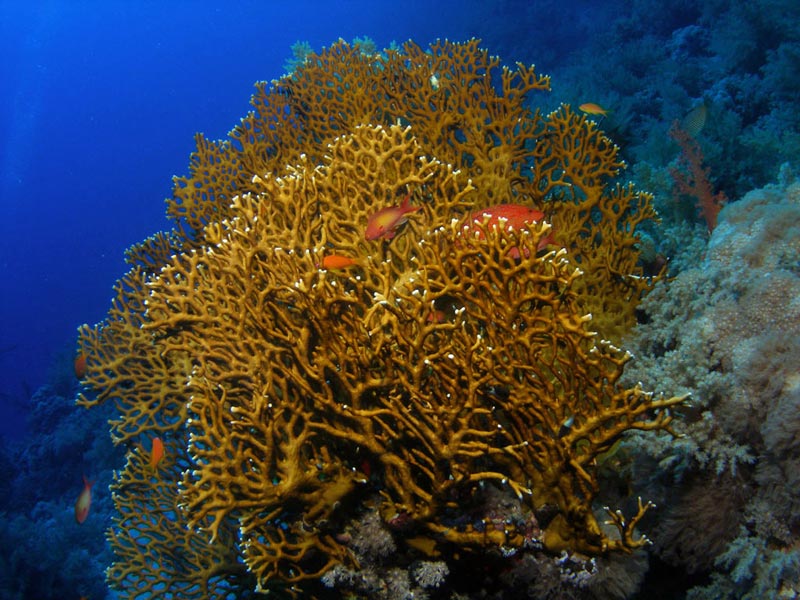
Further Reading:
The Red Sea in Egypt Part II, Farid S. Atiya, 977-00-6697-4
John B. Lewis, Biology and Ecology of the Hydrocoral Millepora on Coral Reefs, Advances in Marine Biology, Academic Press, Vol 50 2006

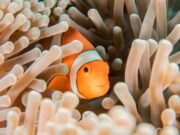




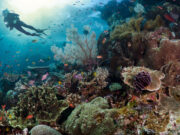
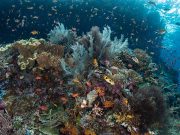
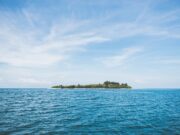


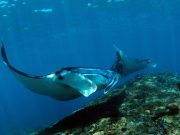
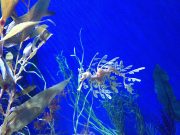





I just got back from Cayman Brac where I went scuba diving and snorkling. I was warned (slightly) by the family friends I had gone with about fire coral, but not really enough about it for me too know what to look for or even where it grew. Thankfully, I was smart enough to know better while snorkling and scuba diving to look and not touch (no one had to tell me that!) but on the last dive we did two days before our return flight we were scube diving on the south side of the island in a pretty area. There was a lot of coral and I acutally saw two sea turtle and a nurse shark, as well as a ton of fish and coral! Our dive master had just shown me this huge lobster and we were swimming over the coral he was hiding under when other regulator caught on the coral pulling right down onto the sharp coral. I got both my elbows, my thigh and hip and a little bit on my other thigh. I thought that I had just hit really hard on a sharp surface and that was what the stinging pain was (people say I have a high tolerence for pain, so it really didnt hurt as much as I thought fire coral would) And we kept diving for a while longer, the spots kept stinging and they were raised and red, but I thought that it was just cause I scratched the surface of my skin (there was no blood or anything) and they were tender all the rest of the day, but they were fine the next day and days afterward, they werent even tender to the touch. It was only 4 days later that they suddenly began to itch like mad, and I began to suspect that I had gotten into fire coral.
I started looking up symptoms and treatments, and after reading about hour the ijuries can last for months, and even spring up on occasion months later, I am dreading it. I had been soooo careful, withought even being told to be careful in the ocean, and all that had to happen was my extra regulator getting caught, and now I will have montch of continuous itching!
When you take someone diving or snorkling, please inform them all you know about fire coral, like what to watch for and things like that, or just simply tell them not to touch anything, cause they may not know and then they may end up with something very long lasting and very painful (cause they do hurt if you scratch them too much!)
I recently went to Cuba and had a run in with fire coral. I got cuts on my left leg a few hours later my leg started to feel like pins and needles almost like tingling sensation. I was concerned so when I got back from vacation I saw my Doctor, he said it was a Neurotoxic infection and gave me medication for it. About a week after the incident on my right arm and leg where I only touched the coral it started to itch like crazy, when I first touched it it burned but gradually went away. So I thought it was strange that a week later it was itching, well it got worse it turned into a huge bright red patch and all these little bumps started to appear which eventually turned blistery. Not fun at all! So I went back to the doctor and was told that it was a chemical allergic reaction I was given a topical corticosteriod along with a tablet steriod treatment and its been working. The topical cream is god sent for itching. Its been 3 wks since the incident and I still have tingling/pins & needles feeling in my leg but not as intense.
I was also stung by the fire coral while scuba diving in Cuba. It was very painful and the symptoms were described above. The weirdest thing is that i had the bumps and scar going away very slowly for three months, and it seemed like finally it was all gone. About a week and a half ago i started getting the bumps back spreading in the same pattern they were there before, its really weird and i do not know what caused it. It has been about 4 months since the sting, and at that time i di see a doctor, i got an injection of some antihestamine, and a course of pills as well as a topical creme. And now im back where i started, good thing it doesnt hurt now its just the bumps and spots.
I really am confused…
why has it appeared again, and 4 months later…
i dont know if my doctor here knows anything about it.
I got stung by fire coral while diving in the carribean. I tried urine and vinegar, nothing worked. However a friend suggested I make a paste of baking soda and urine, spread on affected area, let dry, then scrape off the paste. Near Instant relief!!!
i was stung by fire coral in Egypt, Sharm El Sheikh on both my legs above the knees and on my stomach… this happened at about 1pm, a few minutes after brushing against this coral my legs were burning, it felt like my legs had been slapped hard and i also had the sensation of very painful stabbing pins and needles… on the affected areas my skin had rased lumps. i went to first aid where they gave me vinigar and lemon juice, this eased the pain but about 10 mins later the pain was back to all i could stand without screaming… the medical person then got me a cold compress to put on the affected areas… this helped take the burn away.. by the time the ice was melted the pain was at a level where i could cope..
For the rest of the day my legs felt like they were on fire with constant pins and needles, i thought i'd be ok not to see a doctor.
Evening came and i tried to get to sleep at 11pm but the burn was so intense i didn't fall asleep until 1am i was so close to calling a doctor but i thought if i can fall asleep by the morning hopefully the pain would be less.
The morning came and my legs were still painful and very very tender to the touch, but the burning sensation had reduced.
My chest had the same sensations but not quite as bad as my legs.
2 days later i now have no burn sensation but the affected areas have a red rash type appearance and are still a little tender to the touch, about the pain if you had a bruise and pushed it.
Hopefully the "rash" will gradually go and all will be well.
I will not ever want to come ino contact with that stuff again!!!!
Ouch! that was about as much pain as i could stand.
Dear all,
I too was stung by this so called fire coral whilst at the Red Sea. The affected area on the back of my thigh is the size of my hand. My instructer immediately placed lime and lemon juice over the area. Within a few hours the swelling, which appeared like blistering reduced. However, since then (2 weeks) the area remains extremely itchy and feels very hard under the skin, almost resembling large mosquito bites. The affected area remains rather visible and is yet to heal. I have commenced using cortisone cream in the hope that this will reduce the swelling and affected area, although I am not overly convinced that this is of any use. Further, I have found that in the heat, and heavy scented creams have only aggravated the area and made it more itchy. It is a nightmare, like an itchy mosquito bite that never goes away. My advice to any first time snorkelers, look but dont touch, avoid wedging yourself into the coral to defog your snorkel and have a competent instructer who firstly speaks your language and can warn you of the dangers prior to you experiencing it first hand as I did. So, all in all I am yaet to discover a solution to reduce the swelling. Ciao for now…
i was stung by fire coral while snorkelling in mexico – although treated straight away with vinegar the itching and swelling in the area has persisted for some time.
i was stung on my left foot, inbetween my toes by what i now think was fire coral in the red sea this august. the snorkelling instructor that was with me didn't tell me what it could have been, i developed extreme stinging and a sharp pain as if i had ripped open my foot. this lasted about 20mins and then it started to itch and stil does every now and again. i have used hydrocortisone cream to help with the itchiness but the scar stil remains.
I was stung by fire coral on my left thigh – an area about 2inches by 6 inches, on the 9th August 2007. It is now 5th December 2007 – four months later. At the time I had immediate pain which was very severe and lasted about 20 minutes while still in the sea. After, this was followed by my whole leg swelling up and itching like mad. I was given antibiotic and anti histamine cream and took oral antihistamines. However the rash did not go. I later experienced a series of back pains as if I had a trapped nerve. This moved from area to aera and I am sure it was connected to the fire coral. Finally, having tried every remedy I fuond on the net, including vinegar, I tried shaving the area with bic razor. This I have done every time I had a bath for the past 2 weeks and at last the rash is subsiding. It may not be connected, but worth a try.
Hope this helps,
JG